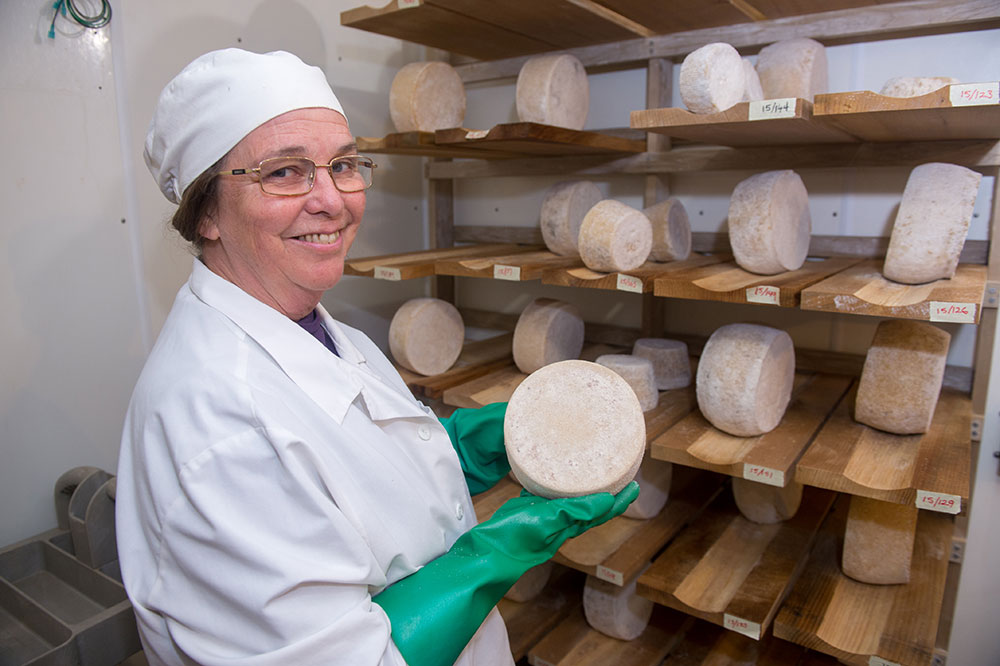Fulfill the Cheese Makers Melbourne Trusts: The Heritage of Floridia Cheese Thomastown
Fulfill the Cheese Makers Melbourne Trusts: The Heritage of Floridia Cheese Thomastown
Blog Article
Unlocking the Tricks of Artisanal Cheese Making: A Detailed DIY Guide
In the realm of culinary craftsmanship, artisanal cheese making stands as a testament to the delicate balance between tradition and development. As we begin on this journey to demystify the art of creating beautiful cheeses, we are faced with a tapestry of tricks and skills waiting to be deciphered.
Choosing the Right Milk
When starting the trip of artisanal cheese production, the choice of milk plays a critical duty in determining the quality and characteristics of the end product. The sort of milk chosen affects the flavor, texture, and in general account of celebrity. Raw milk, straight from the animal, is liked by several artisanal cheesemakers because of its special mix of enzymes, microorganisms, and flavor compounds. Using raw milk comes with policies and risks, making sterilized milk a safer alternative for novices.
Furthermore, the resource of the milk, whether from cows, goats, lamb, or buffalo, contributes unique tastes and features to the cheese. Each kind of milk brings its own nuances, enabling for a wide range of cheese ranges to be crafted based on the chosen milk.
Culturing and Coagulating
To initiate the cheese-making process, the vital actions of culturing and coagulating have to be carefully executed to transform milk into curds and whey. Culturing involves introducing beneficial bacteria to the milk, which then starts the fermentation procedure. These microorganisms transform lactose (milk sugar) right into lactic acid, producing the acidic setting needed for coagulation. The kind of society utilized can substantially affect the flavor, texture, and ripening of the final cheese item.

The timing and temperature control throughout culturing and coagulation are important elements that influence the last outcome of celebrity. Appropriate execution of these actions is necessary to make sure the preferred structure, flavor, and uniformity of the artisanal cheese being created.
Draining and Pushing Curds
After the milk proteins have coagulated and the curds have been reduced to release whey, the following critical action in artisanal cheese making involves draining pipes and pushing the curds to accomplish the desired appearance and uniformity of the final cheese item. Draining is the procedure of separating the curds from the whey. This can be done by moving the curds into a cheesecloth-lined bowl-shaped sieve or mold and enabling the whey to drain off normally. The time for draining pipes can vary depending on the kind of cheese being made and the preferred moisture material.
Once the curds have actually sufficiently drained, the following action is pressing. click this Pressing aids get rid of any staying whey and compacts the curds to form a strong cheese wheel. Pressing can be done utilizing specialized cheese presses that apply consistent and mild pressure over a duration of time. The duration and stress used throughout pressing will affect the last appearance of celebrity, from creamy and soft to hard and firm. Appropriate draining and pressing are critical actions that significantly impact the quality and qualities of the artisanal cheese being created.
Aging and Flavoring Techniques
Carrying out meticulous aging and flavoring techniques is essential in enhancing the deepness and intricacy of artisanal cheeses, raising their preference profiles to charming degrees of refinement and refinement. Aging plays an essential duty in developing the special tastes and textures that distinguish artisanal cheeses.
Seasoning techniques likewise add dramatically to the final taste of artisanal cheeses. Cheesemakers might pick to present additional flavors by integrating active ingredients such as herbs, spices, and even fruits into the cheese during the manufacturing find out here now procedure. In addition, some cheeses are washed or massaged with different liquids, such as salt water or alcohol, to enhance their appearances and tastes.
Covering and Storing Cheeses

Final Thought
In final thought, mastering the art of artisanal cheese making includes thoroughly picking the best milk, complying with precise culturing and coagulating procedures, draining and pushing curds effectively, and using various aging and flavor methods. By following Full Report these actions diligently and with interest to detail, you can produce your own tasty and distinct cheeses in the house. Remember to cover and store your cheeses appropriately to guarantee optimum flavor and appearance advancement. Satisfied cheese making!
Each type of milk brings its own nuances, enabling for a broad variety of cheese ranges to be crafted based on the selected milk.After the milk proteins have coagulated and the curds have actually been reduced to release whey, the next critical action in artisanal cheese making entails draining pipes and pressing the curds to achieve the desired texture and uniformity of the last cheese item. A lot of cheeses must be wrapped in wax paper or cheese paper to enable them to breathe while protecting them from drying out. For cheeses that require to proceed aging, such as bloomy skins or washed rinds, ensure they are saved in a cool environment like a cheese cavern or a refrigerator set to the appropriate temperature level. By paying focus to the covering and storage of artisanal cheeses, cheese makers and enthusiasts can preserve the integrity of these specials and completely appreciate their complicated flavors.
Report this page